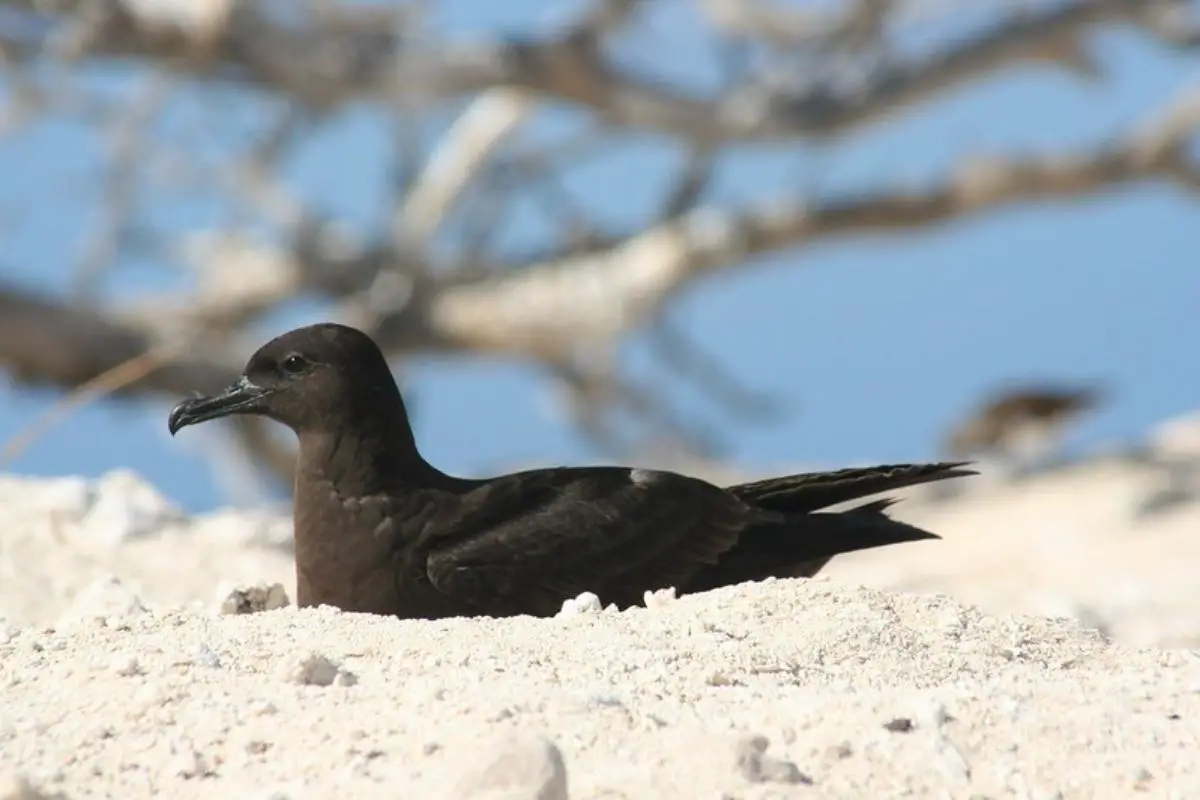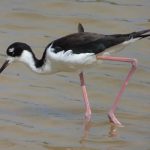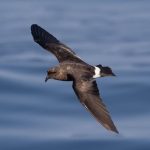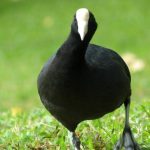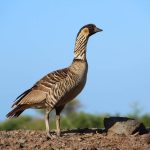Christmas shearwater | image by Duncan via Flickr | CC BY-SA 2.0
Common Name: Christmas Shearwater
Scientific Name: Puffinus nativitatis| Size | Diet | Range in Hawaii | Status in Hawaii |
|---|---|---|---|
| 10 in. - 11 in. | small fish, crustaceans and squid, | All Islands | Least Concern |
The Christmas Shearwater, also known as Puffinus nativitatis, is a small seabird that is known to exist in the U.S. state of Hawaii. These birds are known for its strong flying abilities and makes it a unique bird species in Hawaii.
Christmas shearwater

APPEARANCE
Christmas Shearwaters measure about 10-11 inches in length and have a wingspan of about 22-25 inches. They have a dark brown upper plumage and white underparts. They have a white face and a dark cap, and a dark tail band. Their bill is hooked and dark and their legs and feet are pinkish.
They have a distinctive white wing bar that is visible in flight. Juvenile birds have a more mottled appearance, with dark streaking on the breast and belly. They are often confused with other shearwaters, such as the Flesh-footed Shearwater and the Short-tailed Shearwater, but can be distinguished by their smaller size, white wing bar and browner upperparts.
DIET
Christmas shearwaters primarily feed on small fish and squid, which they obtain by diving into the ocean and foraging near the surface. They have also been known to feed on crustaceans and other small marine animals.
BEHAVIOR
Christmas shearwaters are migratory seabirds that breed on islands in the Pacific Ocean and migrate to the North Pacific during non-breeding season. They are known for their long-distance migrations, often traveling thousands of miles between their breeding and non-breeding grounds. Christmas shearwaters are also known to make use of ocean currents to cover large distances in short periods of time.
They are social birds that are often found in large flocks during the non-breeding season. Christmas shearwaters are also known for their synchronized nesting behavior, where they return to their breeding colonies in large numbers at the same time to breed.
NESTING
Christmas shearwaters nest in burrows, crevices or under rocks in colonies on islands in the Pacific Ocean. They are known for their synchronized nesting behavior, where they return to their breeding colonies in large numbers at the same time to breed.
The breeding season is typically between August and December, they lay a single egg and both parents take turns incubating and caring for the chick. The breeding colonies of Christmas shearwaters are often located on steep slopes or cliffs, which provide protection from predators.
HABITAT
Christmas shearwaters are found in the Pacific Ocean, where they breed on islands such as Lord Howe Island, Kermadec Islands, the Bonin Islands and the Hawaiian Islands. During the non-breeding season they migrate to the North Pacific and are found along the coasts of California, Canada, and Alaska.
They are pelagic seabirds, meaning they spend most of their lives on the open ocean and only come to land to breed and nest. Christmas Shearwater are also known to be able to adapt to different oceanic conditions and can be found in waters with different temperatures and salinities.
RANGE

The Christmas Shearwater is a seabird that breeds in the Hawaiian Islands, specifically in the NWHI except Necker Island and Gardner Pinnacles, and on offshore islets in the MHI such as Ka’ula, Lehua, and Moku Manu. They also breed on islands in the central and eastern Pacific Ocean.
CONSERVATION STATUS
The Christmas Shearwater is currently considered to be of “Least Concern” by the International Union for Conservation of Nature (IUCN) Red List. This means that the species is not considered to be in immediate danger of extinction, and does not meet the criteria for any higher level of threat.
INTERESTING FACTS
1. A Unique Seabird Named After Its Breeding Season
The species is named after its breeding period, which occurs during the Christmas season.
2. Breeds on many of the Hawaiian Islands
The Christmas Shearwater breeds on many of the Hawaiian Islands, including the main islands of Maui, Molokai, and Hawaii, as well as on offshore islets such as Ka’ula, Lehua, and Moku Manu.
3. They are considered least concern species
Christmas Shearwater is considered to be a “least concern” species on a global scale by the International Union for Conservation of Nature (IUCN) Red List. This classification is based on the species’ wide distribution, large population, and lack of significant threats.
4. These birds are strong fliers
Christmas Shearwaters are known for their strong flying abilities, which allow them to travel long distances in search of food. As they forage for food in the ocean, they fly over vast expanses of open water, often covering hundreds or even thousands of kilometers. Their strong flying abilities also enable them to evade predators and navigate through rough seas and bad weather.
5. They are unique to Hawaii
Their unique presence in Hawaii also makes them an important part of Hawaiian culture and history.
Frequently Asked Questions:
Are Christmas Shearwaters active during the day or night?
Christmas Shearwaters are nocturnal and are most active at night when they come ashore to nest in colonies on rocky cliffs and slopes.
Are Christmas Shearwaters migratory?
These birds are not migratory, they are resident on the islands where they breed all year round.
Do Christmas Shearwaters have any natural predators?
Christmas Shearwaters have few natural predators, but their eggs and chicks are vulnerable to predation by introduced mammals such as feral cats, rats, and mongooses.
How many eggs do Christmas Shearwaters lay?
These birds typically lay one egg per year.
How long do Christmas Shearwaters live?
The lifespan of Christmas Shearwaters is not well-known, but it is believed to be around 10-15 years.
